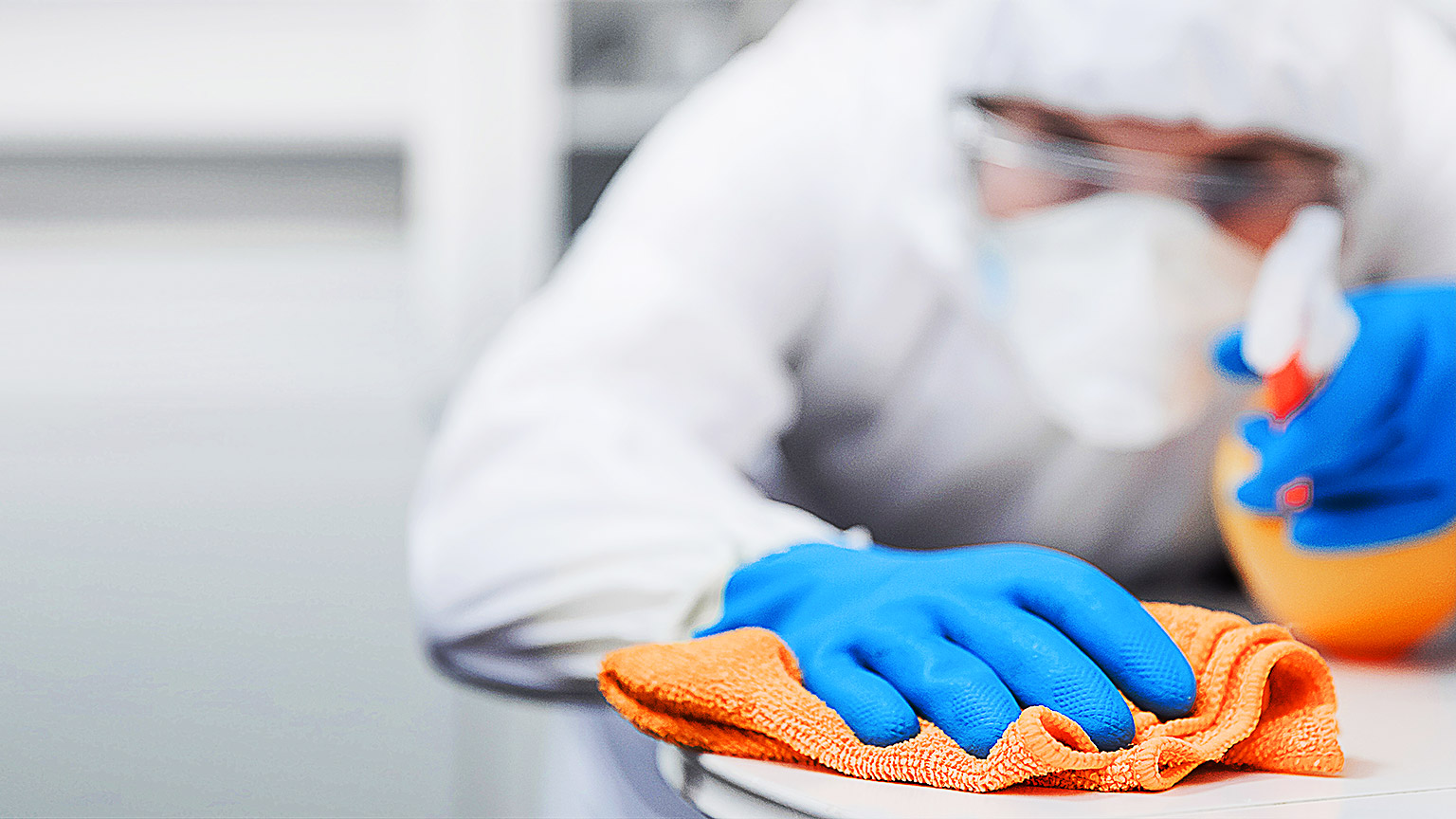When observing infection control and biosecurity there are key principles that need to be considered and followed to ensure disease is not transmitted. The clinic, facility or animal hospital must have policies procedures in place for infection control, to ensure that both animals and humans are kept safe. Ensure you have familiarized yourself with them and sought out the appropriate people if you suspect there is a risk of transmission of an infectious disease (we will explore the relevant people as we continue through the learning).
When you are considering the basic principles of biosecurity, there are specific actions that need to be taken. Some of these will include the following.
- Risk management.
- Ensuring the prevention of disease (biosecurity) and containment (infection control) procedures are always followed.
- Ensuring all workers have excellent personal hygiene, have had all required. vaccinations/immunisation and wear appropriate personal protective equipment (PPE).
- Use of personal hygiene, PPE, and vaccination/immunisation.
- Cleaning animal housing.
- Understand the ways in which infection and disease is spread including via people, animals, the environment, and equipment.
Let us look at each of these actions in closer detail.
Risk management is one of the most important measures you can take with relation to diseases and biosecurity. Across many areas of animal care, a risk management plan will need to be in place for staff to observe and carry out in circumstances that can put themselves (and others) at risk.
Let’s recap on the hierarchy of controls for risk management.
| Risk Level | Explanation | Example |
|---|---|---|
| 1. Elimination | Elimination refers to eliminating the risk altogether and is the highest level in the hierarchy. Wherever it is possible, elimination should occur. When we look at zoonotic diseases, all risk of infections must be removed |
|
| 2. Substitution | Substitution is the second level in the hierarchy and refers to a means of reducing a risk using an alternative when handling equipment or animals |
|
| 3. Isolation | As we move further into the hierarchy, isolation refers to restricting contact with the hazard or risk. | When an animal has been (or has suspected) contagious zoonoses:
|
| 4. Engineering controls | Engineering controls often refer to the design of the facility. It is advised that during the design phases, consultations with infection prevention/ control professionals take place either when building or upgrading. | Logical designs of:
|
| 5. Administrative controls | Administrative controls refer to the procedures that are in place to reduce risk exposure. Some of these measures will also include reporting or communicating with relevant authorities (state or territory) when a notifiable disease is detected. | There may be:
|
| 6. Personal Protective Equipment (PPE) | While PPE is a critical component when working in animal care and should always be used, it does not eliminate the risk. It is an extra layer of protection against a hazard. Regardless, however, it should not be dismissed, and improper use of PPE can cause the exposure to the microscopic bacteria that causes infection to spread. | Education on using PPE is essential to maximise the efficacy in this extra layer of protection. PPE in the animal care industry may come in the form of outerwear clothing including:
|
Fun fact!
Did you know? All new building or renovation plans need to be evaluated from an infection control perspective
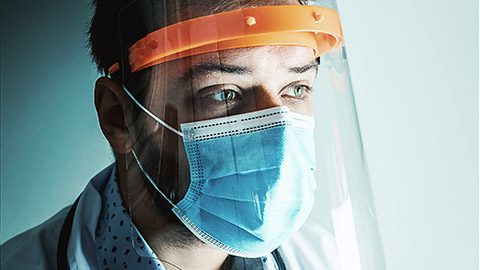
In many circumstances, prevention is often better than cure, particularly when it comes to transmissible diseases. Preventing the spread before it has happened enables the disease to be appropriately controlled within the environment and stop it from infecting other patients, in addition to those who work at the facility then taking it home and spreading it further. We are all familiar with the spread of viruses through the recent COVID-19 pandemic, with a highly transmissible disease, it only takes a small handful of poor practice before it becomes out of control. The same can be said for some diseases in the animal care industry. The best approach is to contain it as soon as there is a suspicion the animal may be carrying a transmissible disease. In some cases, there may be the requirement of intervention from specialist wildlife services to take an animal that is suspected to carry an infectious disease, for example a flying fox/ bat. While this does not necessarily apply to companion animals, if a flying fox or bat as been bought in for examination from an injury, it will not be able to remain at the facility and external intervention will be required.
The first step in preventing the spread, is to isolate the animal. Often, testing will need to be carried out to confirm whether the animal has contracted a transmissible disease. While waiting for results, the animal cannot interact with other animals until transmissible infection can be ruled out. That way, if it does come back with a positive test result, the animal has already been kept away from others before it can spread the infection/disease.
In addition to isolation, the examination room which the animal has been in and any other part of the facility it may have walked through, the areas need to be thoroughly cleaned and disinfected before any other animal is treated or examined in the room. This also helps to prevent other animals picking up disease that may remain transmissible on surfaces.
Limiting contamination
In the event contamination has taken place, measures need to be taken as soon as possible to stop the infection/ disease from becoming out of control. Firstly, limitations need to be placed on the movement of animals and people who may have been in contact. The animal (or animals) will need to be isolated and all areas that have been exposed require thorough deep cleaning. Any other animal that may have come into contact with the animal in question, will also need to be isolated and tests carried out to rule out they too have contracted the infection.
There may be some situations when you may have unknowingly come into contact with an animal that may be infectious. In the event this has occurred you will need to consider the following procedural measures:
- Limit further exposure by removing yourself from the area in question and where possible and notify any other people who may have also been with you.
- Remove any clothing or PPE that may have been contaminated and wash with soap and water, if there is a shower facility available, it is advised you shower to ensure you have removed any matter on your person.
- Notify the veterinarian or supervisor of what has occurred and ensure the appropriate measures are taking place including the examination and treatment of the animal in question. If you are assisting, you need to ensure you are wearing all appropriate PPE, including gowns, gloves, face shields/ protective eyewear and masks. (If possible, ensure PPE is disposable) Decontamination equipment will also need to be available to ensure the area can be effectively cleaned.
Personal hygiene is among one of the most essential practices to minimise/ prevent the risk of infection. There are several factors that need to be considered when it comes to personal hygiene practices. Personal hygiene is not limited to simply washing your hands when required. In addition to hand washing, you also need to consider whether you have open wounds and immunisation and vaccinations.
Let us look at some of these measures in further detail.
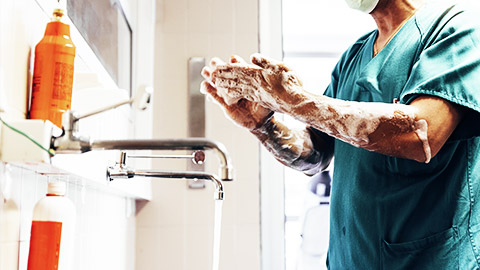
When undertaking handwashing and sanitizing, it is important to remember, thorough and careful hand hygiene is the most important way to prevent the spread of infection. You will also be required to wear gloves; however, gloves are not a substitute before hand hygiene. Regardless of whether you are putting gloves on, your hands will still need to be washed and sanitized.
What is required for handwashing?
When washing hands, there are specific types of hand soaps, sinks and sanitizers that are required to ensure these procedures are carried out appropriately.
Soaps
A liquid hand wash (with no added substances that may cause irritation or dryness) should be used for routine hand washing, especially when hands are visibly dirty or contaminated. Under no circumstances should a bar of soap be used. Bar soaps can harbour bacteria and should not be used in any animal care setting. It is also important to consider, liquid or foam soap should be dispensed with a disposable pump or sensor-delivery dispenser. Soap containers should be refilled without being cleaned since there is a risk of contamination. Antibacterial soap should be used in critical care areas such as ICU, in other areas where invasive procedures are performed. Hands should always be dried with disposable towels after washing, much like bar soaps, fabric hand towels can also harbour activity and should be avoided.
Fun fact!
Biodegradable paper towels are available and can be used as an alternative to regular paper towels. Their purpose is the same, however they are a sustainable alternative.
Sanitizers
Hand sanitizers are formulated to be used without water, for example, an alcohol-based hand rub, may be used when hands appear clean. It is important however, to consider, hand sanitizers are not a complete substitute for hand washing and when they are used, they should be used after hands have been washed. Any alcohol-based sanitizer should be 70 per cent alcohol to ensure maximum anti-bacterial efficacy.
Sinks
All examination or consult rooms should be equipped with a sink and running water to wash hands. Some taps and sinks that have been installed may be automatic or sensor based to ensure handles are not touched. Alternatively, the taps themselves may also have rather large handles where elbows can be used to turn the tap off after washing. In kitchen and food preparation areas, dual sinks are recommended, one for hand washing and one for dishes or cutlery.
Waste disposal bins
The bins which are used to dispose of hand towels after washing hands should always be covered with a lid and should only be opened with a foot pedal to avoid touching the lids of the bin when disposing of hand towels.
Your workplace must have guidelines around handwashing, often areas where there are sinks, you will find a poster or a sign with instructions on appropriate handwashing techniques as seen in the infographic. Handwashing and sanitizing should take place under any of the following circumstances:
- when arriving to the clinic/ facility
- before and after each patient
- after handling money
- using the bathroom/toilet
- before and after eating, drinking, or smoking.
How to wash your hands
Protect yourself and others against infections
Wet hands
Apply soap
Rub hands palm to palm
Lather the backs of your hands
Scrub between your fingers
Rub the backs of the fingers of the opposing palm
Clean thumbs
Wash fingernails & fingertips
Rinse hands
Dry with a single use towel
Use towel to turn off the faucet
Your hands are clean
Application of hand sanitizer
Apply the protection on the palm of one hand
Rub hands together
Cover all surfaces until hands feel dry (20 sec)
As someone who has chosen to work in animal care, there are circumstances that require specific handwashing procedures after contact with animals in veterinary settings, this is known as significant contact and contamination activities.
Significant patient contact includes:
- contact with any animal
- cleaning cages, equipment, or bedding
- undertaking venipuncture or giving an injection.
Contamination activities:
- handling equipment or instruments soiled with blood or other body substances
- handling laundry, equipment, and waste
- contact with blood, body substances and contaminated fomites
- going to the toilet.
There are specific handwashing procedures that are implemented for different levels across animal care in veterinary settings. The following table illustrates the level, washing technique, duration, drying and when it is required to be carried out.
| Level | Washing technique | Duration | Drying | When needed |
|---|---|---|---|---|
| Routine handwash |
|
At least 15 seconds | Pat dry using paper towel, clean cloth towel or a fresh portion of a roller towel |
|
| Aseptic procedure |
|
1 minute | Pat dry using paper towel | Before any procedures that require aseptic technique (such as inserting intravenous catheters) |
| Surgical wash |
|
First wash for the day 5 minutes. |
Dry with sterile towels | Before any invasive surgical procedure. |
Washing your hands will become second nature to you in these settings because you are practicing it so often. In addition to the infographic, you will also find a short video with a practical demonstration on how to wash your hands correctly and thoroughly.
Check skin for cuts and abrasions. Now that you have shaped your understanding of hand washing as part of your personal hygiene, you will also need to be aware, having open wounds, cuts and abrasions can become a hygiene risk. You must be mindful of any of these injuries no matter how small they may be and protect your skin according to workplace guidelines.
Having an open cut or wound is essentially a pathway for a pathogen to enter the body, your skin when it is intact acts like a shield. To prevent microscopic bacteria from entering the body through an open cut or wound you will need to physically check your skin for any cuts, scratches, or grazes.
Ensure you look between your fingers, both sides of your hands, wrists, arms, and elbows. If you do happen to find that you have any cut, scratch, or abrasion, you will need to ensure you have covered it covered with a water-proof dressing, such as a band aid that should be changed as necessary.
In addition to cuts and open wounds, you should also be mindful of certain skin conditions such as dermatitis. In some cases, dermatitis can be quite severe with open and weeping skin. If you (or a person working in animal care) suffer from dermatitis, then you will need to seek medical advice, notify your supervisor or the veterinarian, and should avoid direct patient care until the condition resolves.
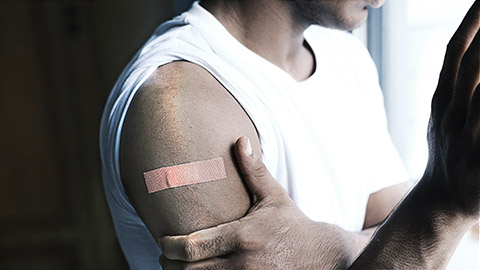
Vaccinations and immunisations are an added layer of defense required when you are working with animals. As you will learn, there is a risk when you are working with animals in addition to bites and scratches, there is also zoonoses, where diseases can be passed from animals to humans. The following table outlines some of the vaccinations and the reason they are required for working in the animal care industry.
| Vaccination | Purpose |
|---|---|
| Australian Bat Lyssavirus pre-exposure vaccination | All staff with bat contact must be vaccinated against rabies, followed by rabies boosters, in accordance with the recommendations of the Australian Immunisation Handbook. |
| Tetanus vaccination | Tetanus immunisations must be up-to date. Report and record puncture wounds and other possible exposures to tetanus. Consult a health care provider regarding the need for a tetanus booster. |
| Q fever vaccination | An accredited medical practitioner needs to be contacted to provide a blood test and vaccination against Q Fever |
| Seasonal influenza vaccination | Unless contraindicated veterinary personnel are encouraged to receive the current seasonal influenza vaccine. |
We have touched briefly on the relevant PPE that you will require, however we are going to look at this in further detail. When you are working with animals especially those with high levels of infection you will require higher levels of PPE than in regular circumstances such as standard consultations.
- The following list outlines the importance of wearing PPE in the animal care industry. PPE offers protection from:
- pathological contamination of yourself or other animals from blood and other body fluids
- injury
- environmental conditions such as heat or the climate
- damage and/or dirt/stains to your clothes.
It is important to ensure your PPE is well maintained and that it fits you correctly. Once you have donned your PPE, you should ensure you have it checked by a supervisor or senior member of the team. It is preferred your PPE is checked by someone who is experienced with work health and safety who understands and knows the parameters around the appropriate fitting.
The following table illustrates the types of PPE that is required within these settings.
| Type of PPE | Use/Purpose |
|---|---|
| Hair net / protective hood | Helps to prevent loose hair from contaminating an open wound, incision, or food. |
| Goggles | Prevent contamination of the eyes from splashes, sprays, and respiratory droplets. They must fit snuggly particularly in the corners and across the brow. |
| Face shields | To be worn with the added benefit of reducing transmission via the nose and mouth. |
| Masks Can be:
|
Help to prevent contamination of the mouth and nose from splashes, sprays and respiratory droplets and helps to reduce instances of hand to face contact that can occur subconsciously. (Other types of masks include full ventilation masks that are connected to an oxygen mix cylinder for use in Smokey or gaseous environments) |
Gloves
|
Gloves must be changed regularly and should not be considered a replacement for hand washing. It is very important to wash your hands as well as wear gloves. Prevent hand contamination and the spread of infection between animals. |
Protective clothing
|
Prevents contamination of the skin and also protects personal clothing. |
Protective footwear
|
Helps to prevent contamination in sterile areas and also damage to everyday footwear and can provide protection from crush injuries. |
Now that you have reviewed the list, consider the following scenario.
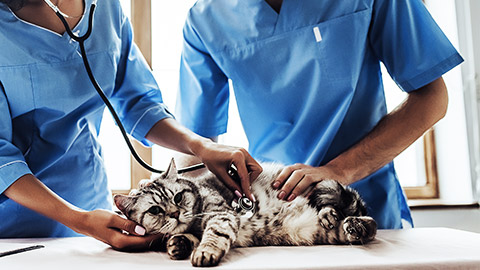
A sick cat has been bought into the veterinary clinic. Suzie received a phone call from the owner informing them cat has been vomiting and there appears to be traces of blood in the faeces. Until she can examine the animal, Suzie will not know if the cat is ill from a potentially infectious disease. Suzie has asked Dean, a learning veterinary nurse to assist her with examinations. She has informed Dean that he will need to wear PPE including a gown, gloves, and goggles. Dean dons his PPE and walks in to help Suzie. Suzie notices the goggles are not fitted correctly because they are slipping down the bridge of his nose. She explains to him he will need to an alternative pair of goggles because they are not fitted. She helps him find another pair in the clinic’s storage for stock. The new pair of goggles he is wearing now fit snuggly on his face and no longer slip down his nose and the gloves.
When a disease has been suspected or diagnosed a process of notifying and reporting will need to take place to ensure the transmission is contained. In some cases, further assistance may be required from external personnel to determine the appropriate measures to be taken for example, if a wild animal has been injured in a car accident and has been bought in for examination, the clinic may not have the resources to treat the particular species and will need to call in extra help.
If disease is one of a highly serious nature, it will then need to be reported to any of the following key personnel:
- the veterinarian
- state or territory’s department of primary industries for agriculture (Only if it is a notifiable disease)
- emergency animal diseases.
The contact details of individuals that need to be notified in these circumstances should be accessible. One way this can be accomplished, is having the contact list close to the telephone to avoid rummaging through documentation. Some places may even have a speed dial system programmed into the phone to make this easier.
As you progress through the learning, we will look at reporting processes in further detail.
